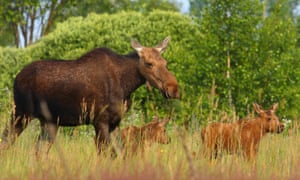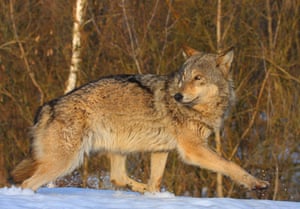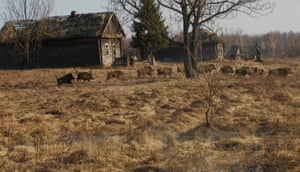High numbers of elk, deer, boar and wolves show long-term effect of world’s worst nuclear accident is less damaging than everyday human activity, say scientists

The number of elk, deer and wild boar within the Belarusian half of the Chernobyl exclusion zone today are around the same as those in four nearby uncontaminated nature reserves.
Wolves, which are commonly hunted in the region because of their impact on livestock, were seven times as abundant with the zone, according to a study published on Monday.
The findings run counter to previous hypothesises that chronic long-term exposure to radiation would hit animal populations.

“What we do, our everyday habitation of an area – agriculture, forestry – they’ve damaged wildlife more than the world’s worst nuclear accident,” said Prof Jim Smith, professor of environmental science, University of Portsmouth, and one of the paper’s authors.
“It doesn’t say that nuclear accidents aren’t bad, of course they are. But it illustrates that the things we do everyday, the human population pressure, damages the environment. It’s kind of obvious but it’s an amazing illustration of it.”
The explosion of reactor four on 26 April 1986 killed dozens of plant staff and rescue workers, and led to high radiation doses in the first weeks and months that had significant effects on animal health and reproduction around Chernobyl.
But after analysing previously unpublished animal track records and aerial surveys from Belarusian authorities and scientists, the authors of the study, which was published in the journal Current Biology, found no long-term impact to population numbers from the radiation released by the accident.
“Chernobyl caused a lot of human damage. The social and economical problems were huge. If you set that aside – if you can set that aside – it’s hard to argue that it’s really damaged the ecosystem as a whole,” said Smith.

The number of animals was probably lower before the nuclear accident than now, because the area was relatively developed, with industry, agriculture and hunting. While it was possible that radiation still had some negative effects on animals it was not enough to affect their populations, Smith said.
But Anders Pape Møller of the University of Paris-Sud questioned why the data had gone unpublished for decades and argued the rebound in populations was simply a sign of wildlife doing better across Europe.
“Big mammals have been increasing for the last decades in most of Europe. So Chernobyl is no different. The interesting question is whether the increase in Chernobyl is larger than say in Germany, France or Scandinavia,” he told the Guardian.

Møller, who has researched the region since 1991 and published papers on the negative impact of radiation on insects and birds at Chernobyl, said there was no reason to expect differences between different types of animals.
The researchers analysed a 2,165 sq km (836 sq miles) area of the exclusion zone in Belarus, known as Polesie State Radioecological Reserve (PSRER), looking at data since 1986 on the abundance of elk, roe deer, red deer and wild boar. Species that have been sighted or reintroduced to the area since the accident but were not found there previously, such as European bison and lynx, were not included.
